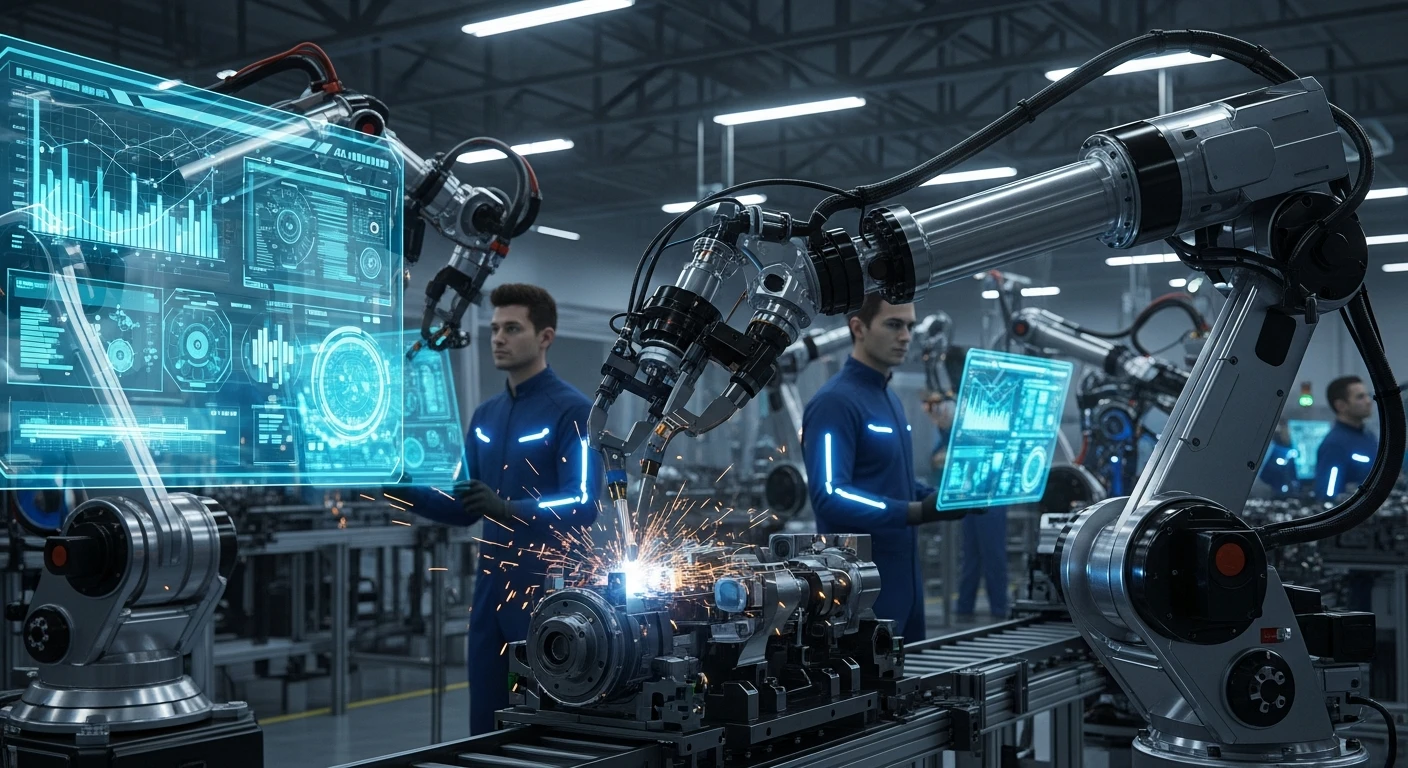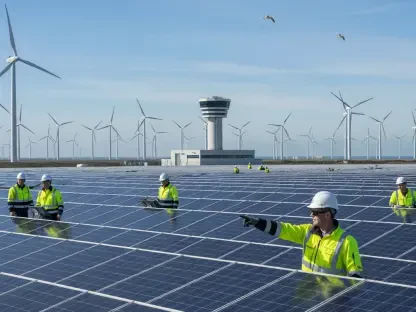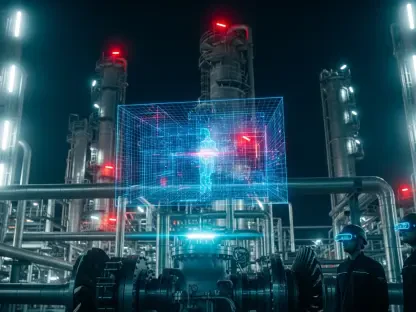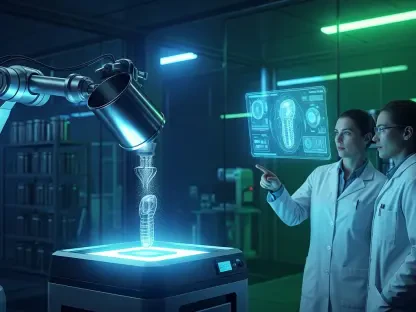In recent years, the food and beverage manufacturing industry has witnessed a significant transformation driven by the emergence of generative artificial intelligence (Gen AI). This advanced form of AI, typified by tools such as ChatGPT, initially made waves in consumer settings, but its integration into industrial processes is now becoming more profound. Gen AI’s application in the industry extends beyond the initial excitement and speculation surrounding its capabilities. As manufacturers navigate a landscape characterized by workforce shortages and high operational standards, Gen AI has emerged as a pivotal productivity enhancer in complex, process-driven environments. This transition underscores its potential to reshape industry dynamics, particularly in tackling global challenges and catering to the expectations of a tech-savvy workforce.
The food and beverage sector faces perennial hurdles, from labor shortages to evolving consumer preferences and regulatory demands. These complexities have been further exacerbated by the need to attract and retain a younger generation of workers, Generation Z, who are often reluctant to engage in careers perceived as monotonous and hazardous. Here lies the opportunity for Gen AI, alongside technologies like augmented reality (AR) and virtual reality (VR), to redefine work environments by making them more engaging and interactive. These technological innovations enhance their appeal to younger talent pools, aligning with the broader trend of digital transformation seen across the manufacturing ecosystem. Furthermore, Gen AI not only addresses immediate staffing concerns but also aligns with the sector’s strategic long-term goals by fostering a workforce that is tech-proficient and adaptive to cutting-edge methodologies.
The Evolving Workforce and Technological Integration
The evolving demands of food and beverage manufacturing necessitate a workforce proficient in new technology while ensuring product quality and regulatory compliance. Gen AI and related technologies are pivotal in this transformation journey, serving as conduits for productivity and skill enhancement. Implementations such as connected worker platforms have been strategically integrated to facilitate this shift, aiming to improve the workforce’s effectiveness and satisfaction. These platforms leverage AI to deliver dynamic training and operational instructions, ensuring workers are empowered and engaged. The heightened focus on training and development reflects a growing understanding of the industry’s pressing need to address skill gaps and enhance operational efficiency. Training programs are increasingly tailored to ensure compliance with health and safety standards and foster continuous learning and upskilling.
Moreover, as Gen AI is increasingly recognized for its ability to create interactive and engaging content, the industry’s training resources and methodologies are being refined. AI-driven systems enable the rapid conversion of traditional materials into formats that resonate with modern workforces, particularly those accustomed to digital learning environments. This shift has been bolstered by a strong economic incentive; companies are observing a symbiotic relationship between enhanced worker competency and business profitability. According to industry analyses, integrating these technologies could potentially amplify the economic impact of traditional AI by up to 40%, unlocking an annual profit potential ranging between $160 billion and $270 billion. Gen AI presents a robust case for its continued and expanded application within the sector.
Overcoming Challenges with Content Creation and Distribution
The adaptation to Gen AI-driven processes presents several challenges, particularly in content creation and distribution. As food and beverage manufacturers seek to attract new talent, the need to develop comprehensive training materials is paramount. Creating high-quality, relevant content is crucial but can be profoundly complex, demanding substantial resources for effective execution. These educational assets range from operational manuals and safety checklists to extensive knowledge transfer initiatives. As industries grapple with market pressures such as rising costs, inflation, and geopolitical uncertainties, the agility of content creation processes is increasingly recognized as a crucial competitive edge.
Compounding these challenges is the need for innovative solutions that streamline content retrieval on the shop floor. Gen AI addresses these concerns by providing platforms that categorize, store, and deliver essential information in real time, optimizing worker access to critical data. The use of multimedia formats, particularly video, has emerged as a favored method among Generation Z employees, as it facilitates rapid comprehension and engagement. AI-powered systems drastically reduce the time required to distribute instructions, ensuring that training remains effective despite often limited financial and human resources within factories. This convergence of technology and expertise highlights the dual focus of modern manufacturing: enhancing worker capability while ensuring operational sustainability and resilience.
Breaking Language Barriers and Enhancing Communication
A notable aspect of Gen AI’s impact in food and beverage manufacturing is its ability to bridge language barriers, fostering effective communication within diverse workforce environments. The American manufacturing sector, for instance, heavily relies on immigrant labor, where language discrepancies can pose significant operational challenges. Gen AI offers a sophisticated solution through AI-powered transcription and translation tools. These technologies enable the quick, accurate translation of technical instructions and operational guidelines into multiple languages, ensuring that all employees, regardless of their native language, can understand and adhere to safety and quality standards.
Such advancements not only improve comprehension and retention but also significantly enhance workplace inclusivity, safety, and productivity. As AI systems become more entrenched in operational frameworks, the ability to facilitate seamless communication across diverse demographics becomes instrumental in preventing misunderstandings that could lead to inefficiencies or safety violations. By empowering workers through accessible and multilingual content, companies can elevate their operational standards, reduce error margins, and foster a culture of inclusivity and cooperation.
Advancements in Search Capabilities and Operational Efficiency
In the high-paced, information-rich setting of food and beverage manufacturing, the need for robust search capabilities is evident. Gen AI enhances operational efficiency through intent-powered search functions that refine user input, optimizing readability and ensuring that query results are accurate and relevant. Such precision is vital in dynamic manufacturing environments where quick, easy access to information can significantly impact decision-making processes and issue resolution.
The integration of AI semantic functionality in internal search engines exemplifies the ongoing innovations within the industry. By improving the accuracy of search results, these tools empower workers to independently solve problems, enhancing productivity and reducing downtime. As manufacturing processes grow increasingly complex, the utility of AI-driven search tools in eliminating retrieval inefficiencies becomes all the more critical. As manufacturers continue to evolve, embracing Gen AI and its ancillary technologies offers transformative potential, redefining how operational challenges are met and surmounted in the modern era.
Future Prospects and Industry Implications
In recent times, the food and beverage manufacturing industry has undergone a significant transformation, largely influenced by the rise of generative artificial intelligence (Gen AI). This cutting-edge AI, exemplified by tools like ChatGPT, initially thrived in consumer domains but is now deeply embedding itself into industrial workflows. Beyond the initial intrigue and speculation surrounding Gen AI’s capabilities, its integration is proving crucial amid prevailing challenges like workforce shortages and maintaining high standards. Gen AI has emerged as a vital tool, boosting productivity in intricate, process-heavy environments. Its adoption hints at a fundamental shift in industry dynamics, aiding in overcoming global hurdles and meeting the expectations of a tech-centric workforce.
The sector struggles with persistent issues such as labor deficits, changing consumer tastes, and regulatory pressures. These complexities are compounded by the challenge of attracting Generation Z, who often perceive these roles as dull and risky. Gen AI, along with augmented reality (AR) and virtual reality (VR), offers a way to transform workspaces, making them more appealing to young talent by incorporating interactive and engaging technology. This aligns with the broader digital transformation trend sweeping through the manufacturing industry. Gen AI addresses immediate staffing challenges and supports long-term strategic objectives, nurturing a workforce that is adaptable and skilled in advanced technologies.









